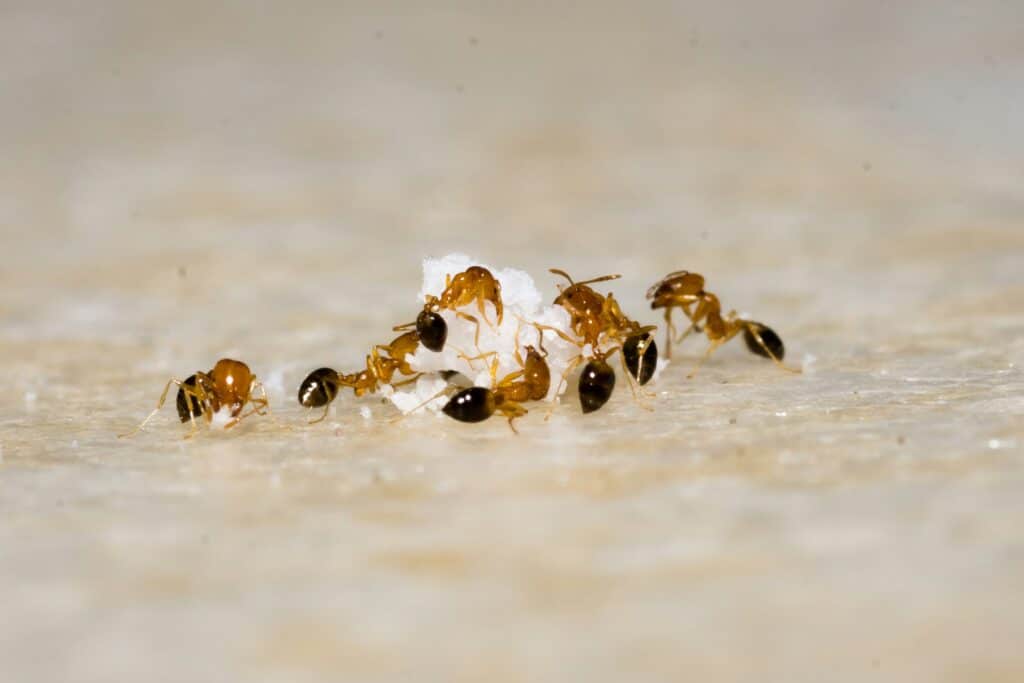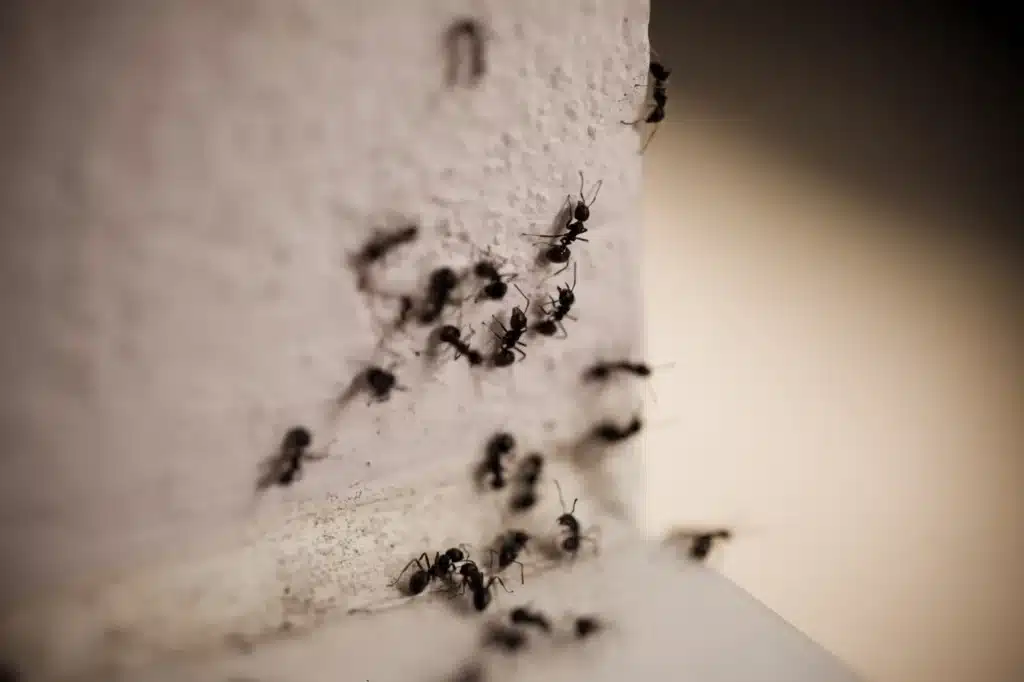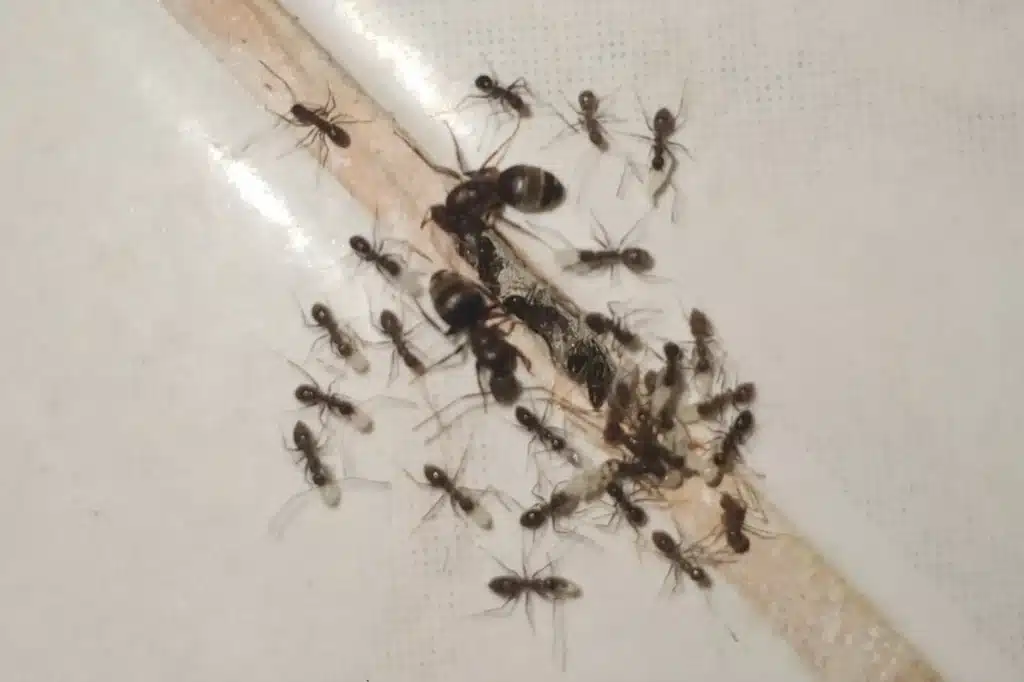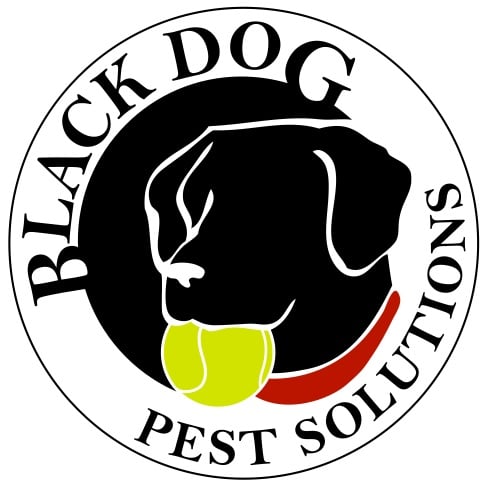
Professional Pest Control: What Ant Removal Methods Will Work Best for You?
Ant infestations are a persistent challenge for residential and commercial properties. When ants invade, they can mar a building’s appearance, damage structures, contaminate food, and trigger allergic reactions. This article examines common ant species, professional ant removal methods, prevention strategies, and cost factors to help property managers and pest control professionals choose effective and safe ant elimination strategies.
The following sections provide a guide on identifying common ant species, professional removal techniques, prevention measures, pricing factors, reasons to trust expert pest control providers, signs of ant infestations, and matching removal methods with ant species. Understanding these elements enables informed decisions on pest management that are efficient and environmentally conscious. Ant species information can greatly aid in these decisions. Transitioning into the discussion, the next section focuses on the specific ant species frequently encountered, setting the stage for tailored removal methods and integrated pest management approaches.
What Are the Most Common Ant Species Affecting Your Property?
Identifying ant species is crucial because different species require distinct removal approaches. Property owners should carefully observe ant trails, nesting sites, and physical characteristics. For instance, carpenter ants are relatively large and tend to nest in wood, while pharaoh ants are small and form extensive indoor trails. The variety, from red imported fire ants to pharaoh and carpenter ants, demands a tailored pest management approach based on each species’ habitat and social structure are included in this assessment.
How Can You Identify Different Ant Species?
Identification starts with a physical examination. Carpenter ants have a robust, black or reddish-brown body with a distinct waist. Fire ants display reddish coloration and aggressive behavior when disturbed. Pharaoh ants are minute, light yellow, and often nest in warm, humid settings. Owners should consider collecting samples during peak activity and consulting professionals who use microscopic and behavioral analyses. Mobile applications and online databases now assist in matching ant images to species profiles.
What Are the Characteristics of Common Ant Species?
Each species has unique traits influencing control strategies. Red imported fire ants are known for painful stings and large mound nests in soil, which spread infestations quickly. Carpenter ants, although less aggressive, threaten wooden structures. Pharaoh ants can rapidly spread in warm environments such as commercial kitchens and hospitals, posing health risks. Understanding attributes like size, color, nesting behavior, and aggression helps professionals select the correct insecticide or bait formulation with minimal collateral damage.
How Does Ant Species Affect Removal Method Choice?
The ant species determines the treatment type and intensity. For example, carpenter ant infestations may require invasive treatments such as targeted insecticides with subsequent structural repairs. In contrast, pharaoh ant problems might be best managed with slow-acting baits and continuous monitoring. Control strategies must also consider colony size and nesting depth; ant dusting may suffice for superficial nests but not for those hidden deep within walls or underground. Professionals combine observation, bait trials, and sometimes lab analyses to design custom treatment plans that optimize effectiveness while protecting the environment.
What Professional Ant Removal Methods Are Available?

Professional ant removal employs several techniques to eliminate infestations safely and effectively. Experts do not use a one-size-fits-all approach; they select among baiting, spraying, and dusting based on factors such as the species present, colony size, nest locale, and environmental conditions.
How Does Ant Baiting Work and When Is It Most Effective?
Ant baiting, a widely used method, targets the colony at its source. Bait stations containing a slow-acting toxicant mixed with an attractant are strategically placed. Foraging ants carry the bait back to the nest and share it with the queen and other members, leading to a gradual colony collapse. The method’s success depends on proper bait placement and formulation that is attractive to the target species. For instance, sugar-based attractants may be ideal for pharaoh ants, while protein-based baits might better suit carpenter ants. Baiting is most effective when integrated with ongoing monitoring and periodic reapplication as part of an integrated pest management (IPM) strategy.
What Are the Pros and Cons of Ant Spraying?
Ant spraying applies liquid insecticides directly to nests, trails, and entry points. Its main advantage is an immediate knockdown effect that rapidly reduces ant numbers and provides quick relief. However, spraying may impact non-target organisms, including beneficial insects and pets if not carefully applied. It is best suited for localized infestations; widespread issues might require multiple treatments and risk developing chemical resistance. Despite these concerns, spraying remains useful, especially when combined with other methods such as baiting.
When Should Ant Dusting Be Used for Ant Control?
Ant dusting involves applying insecticidal dust in hard-to-reach areas such as crevices, wall voids, or deep cracks where ants hide. The dust clings to the ants and works over time, as they ingest it during grooming. Its residual nature makes dusting valuable for targeting reinfestations. However, care must be taken to avoid excessive spread or inhalation risks for humans and pets. Dusting is particularly recommended for species with hidden nesting habits, like carpenter ants found within wooden structures.
How Do Professional Methods Compare to DIY Ant Removal?
Compared with DIY methods, professional treatments are more effective because they are tailored to the specific ant species and infestation characteristics. Professionals utilize diagnostic tools for precise species identification and nest location, thus customizing treatment plans with strategic placement and follow-up measures. In contrast, DIY approaches often lack the necessary precision and continuous monitoring to prevent reinfestation and may use broad-spectrum chemicals that affect the surrounding environment.
How Can You Prevent Future Ant Infestations After Removal?
After eliminating an infestation, prevention is key. A comprehensive prevention strategy addresses both immediate weaknesses and long-term risk factors. Prevention involves not only repelling ants but also creating an environment that is unattractive to them.
What Home Prevention Techniques Reduce Ant Entry?
Regular sanitation is essential. Cleaning kitchen surfaces frequently, storing food in sealed containers, and promptly disposing of garbage remove attractive food residues. Sealing cracks and gaps around windows, doors, and utility lines also blocks potential entry points. Homeowners should inspect outdoor venting and piping for deterioration, as these can serve as ant paths. Maintaining high cleanliness levels and sealing small openings can reduce ant infestations significantly.
How Can You Ant-Proof Your Kitchen and Pantry?
Ant-proofing involves hygiene and organization. Promptly cleaning spills and crumbs, deep cleaning appliances, and keeping countertops clear are critical. Incorporating natural repellents like peppermint oil or vinegar into a cleaning routine can deter ants. Adding door sweeps or weather stripping further limits access. Storing dry foods in airtight containers not only preserves product freshness but also minimizes attractants, making kitchens and pantries less appealing to ants.
What Outdoor Measures Help Control Ant Populations?
Outdoor control is equally important. Landscape maintenance, trimming vegetation away from the building and reducing mulch near foundations, limits ant pathways. Regular yard cleaning clears fallen fruits and debris that serve as food sources. Applying environmentally friendly insecticides or natural repellents around the property perimeter creates a chemical barrier. Additionally, proper drainage and moisture control reduce indoor and outdoor ant activity, as many species thrive in damp conditions. These measures, together with indoor strategies, form a comprehensive defense against reinfestation.
How Much Does Professional Ant Removal Cost and What Factors Influence Pricing?

The cost of professional ant removal depends on the infestation’s scope, severity, and unique conditions. Homeowners and business operators benefit from understanding these factors to budget appropriately. For more information, visit
.
What Are the Typical Cost Ranges for Different Removal Methods?
Costs vary with the treatment approach. Basic baiting treatments might range from $150 to $300, while extensive spraying and dusting for larger infestations in commercial settings can range from $300 to $600 or more. Integrated pest management approaches, combining multiple techniques and follow-up visits, may be priced higher due to their comprehensive nature. Factors such as geographic location, property size, and infestation complexity all influence pricing.
How Does Infestation Severity Affect Ant Removal Pricing?
Mild infestations with a few trails or small nests usually require minimal chemical use and shorter treatment times, resulting in lower costs. In contrast, widespread or deeply hidden infestations necessitate multiple visits, higher amounts of insecticides or baits, and sometimes additional structural treatments such as sealing entry points. In severe cases, costs can exceed $1,000. Early intervention typically reduces overall expenses significantly.
Are Free Inspections and Quotes Available?
Many pest control companies offer complimentary inspections and quotes to assess the extent of an ant problem. These evaluations help identify the species involved and allow professionals to design a tailored treatment plan. Free inspections not only assist with budgeting but also build trust by providing transparent cost estimates and timelines for treatment.
Why Choose Professional Pest Control Services for Ant Removal?
Professional pest control services offer advantages over DIY methods, including expertise, advanced tools, and specialized treatments. With complex ant infestations capable of causing significant damage, professional services ensure long-term peace of mind and effective eradication.
What Expertise Do Certified Technicians Bring to Ant Removal?
Certified technicians possess deep knowledge about ant species, their behavior, and suitable treatment options. They can diagnose infestation sources, identify subtle signs like microscopic trails, and evaluate building vulnerabilities. Their use of integrated pest management (IPM) practices ensures treatments are both environmentally friendly and safe for occupants.
How Do Professionals Ensure Safety for Families and Pets?
Safety is paramount when applying chemical treatments. Professionals comply with strict regulatory standards, using pesticides and insecticides according to manufacturers’ guidelines. They employ proper protective gear and conduct thorough site assessments, reducing exposure risks for children, pets, and non-target organisms. Detailed safety instructions are provided to ensure effective and secure application.
What Guarantees and Customer Support Are Offered?
Many professional services include service guarantees and follow-up support. Warranties often cover re-treatments if ants reappear within a specified period, providing reassurance to customers. Ongoing support, such as regular inspections and maintenance treatments, ensures long-term pest control, contributing to higher customer satisfaction and lasting results.
What Are the Signs of an Ant Infestation You Should Watch For?

Early detection of an ant infestation can reduce damage and control costs. Visible signs include ant trails and damage to property. Recognizing these signs early allows homeowners to act before the situation worsens.
How to Spot Ant Trails and Nesting Sites?
Ant trails, appearing as thin, winding lines of ants moving in search of food or water, are an early indicator of an infestation. Nesting sites may be found in hidden crevices, wall voids, or underground near the foundation. In species like fire ants, visible mounds or soil aggregations may be present. Regular inspections around doorways, windowsills, and behind appliances can help spot early signs.
What Damage Can Ants Cause to Your Property?
Although often seen as minor nuisances, some ants can cause significant damage. Carpenter ants, for example, burrow into wood, compromising structural integrity. Fire ants may damage landscaping and inflict painful stings, while pharaoh ants can contaminate food storage areas. Persistent ant activity can disrupt household routines and lead to further structural issues if not addressed.
When Is It Time to Call a Professional for Ant Removal?
If ant trails or nests appear in multiple areas, if DIY treatments fail, or if the infestation poses health or structural risks, it is time to consult a professional. In commercial settings, infestations that disrupt operations warrant expert intervention for timely and effective control.
How Do Different Ant Removal Methods Target Specific Ant Species?
Different ant species require tailored treatment methods. Professional pest control companies use specialized techniques to address unique behaviors, nesting habits, and chemical sensitivities.
Which Methods Are Best for Carpenter Ants?
- Carpenter Ants – Structural Threats Addressed with Targeted Treatments Carpenter ants burrow into wood; the best approach involves combining targeted insecticidal sprays and dust formulations. Professionals focus chemical applications in crevices and voids, while bait formulations encourage foraging to disrupt the colony.
How Are Pharaoh Ants Effectively Controlled?
- Pharaoh Ants – Precise Baiting for Persistent Indoor Infestations due to their ability to form multiple small colonies, pharaoh ants are typically controlled using slow-acting baits that foraging workers carry back to hidden nests. Barrier sprays and continuous monitoring further enhance control, with repeated bait applications often necessary.
What Removal Techniques Work for Fire Ants and Other Aggressive Species?
- Fire Ants and Aggressive Species – A Dual Approach Combining Dusting and Spraying Fire ants defend their mounds aggressively. Direct treatments using insecticidal dusts and liquid sprays provide quick knockdown, while subsequent baiting can control any re-infestation by targeting foraging trails.
Each method is supported by established protocols that minimize impacts on non-target organisms while maximizing effectiveness. Combining methods based on detailed inspections often yields the best immediate and long-term results.
Additional Methods for Specific Conditions (Additional List)
- Argentine Ants – Combined Baiting and Residual Sprays Argentine ants are adaptable and usually require wetted baits with a slow-acting toxic ingredient. Residual sprays applied in high-traffic areas help maintain control over foraging paths.
- Carpenter Ants – Gel Baits for Hard-to-Reach Nests Gel baits are designed to penetrate crevices where carpenter ants hide, ensuring the toxicant reaches deep into the colony. This method is particularly useful when structural damage is evident.
To summarize, the table below compares primary ant species with their recommended control methods and key benefits:
| Ant Species | Recommended Method | Key Attributes | Example Benefit |
|---|---|---|---|
| Carpenter Ants | Targeted sprays and dusting | Penetrates wood structures | Reduces structural damage |
| Pharaoh Ants | Slow-acting baits with barrier sprays | Multi-colony targeting | Achieves colony collapse in weeks |
| Fire Ants | Dual approach: dusting and spraying | Rapid knockdown response | Reduces mound activity quickly |
| Argentine Ants | Combined baiting and residual sprays | Adaptability to urban environments | Sustained indoor control |
| Other Aggressive Species | Integrated treatments (bait + spray) | Customized protocols based on species | Enhanced efficacy in high populations |
Final Thoughts
Effective ant removal requires a strategic approach that begins with accurate species identification and extends through tailored removal methods. Professional pest control services provide the necessary expertise for selecting and implementing treatments, whether by baiting, spraying, or dusting, that offer immediate relief and long-term prevention. Paired with proactive home and landscape maintenance, these services ensure better protection against future infestations, ultimately delivering more efficient and enduring ant management.
Frequently Asked Questions
Q: How quickly can professional ant removal methods show results? A: Results can be seen within days to weeks. Baiting treatments typically reduce populations over 6-8 weeks, while spraying and dusting provide immediate knockdown effects. The timeline depends on the ant species and infestation severity.
Q: Are the chemicals used in ant removal safe for children and pets? A: Reputable companies use products approved by regulatory agencies and adhere to strict guidelines to ensure safety. Certified technicians target treatments precisely, minimizing risks to non-target organisms and following detailed post-treatment instructions.
Q: Can I combine DIY methods with professional treatments? A: Although some homeowners try DIY methods first, it is generally not recommended to mix them with professional treatments. Professionals design integrated pest management strategies ensuring that all treatments work together effectively to prevent reinfestations.
Q: How often should properties be inspected after ant removal? A: Follow-up inspections are typically recommended every 3 to 6 months, depending on property conditions and local climate, to catch any emerging problems early.
Q: What factors could lead to treatment failure? A: Failure may occur if the ant species is misidentified, if the infestation is too severe, or if prevention measures are not maintained. Poor sanitation, structural issues, and excess moisture can also reduce treatment effectiveness.
Q: How do I know if I need professional ant removal? A: Persistent ant trails, multiple nesting sites, property damage, or rapid recurrence after DIY treatments indicate that professional intervention is needed. Expert evaluations offer accurate species identification and tailored treatment plans for lasting results.
